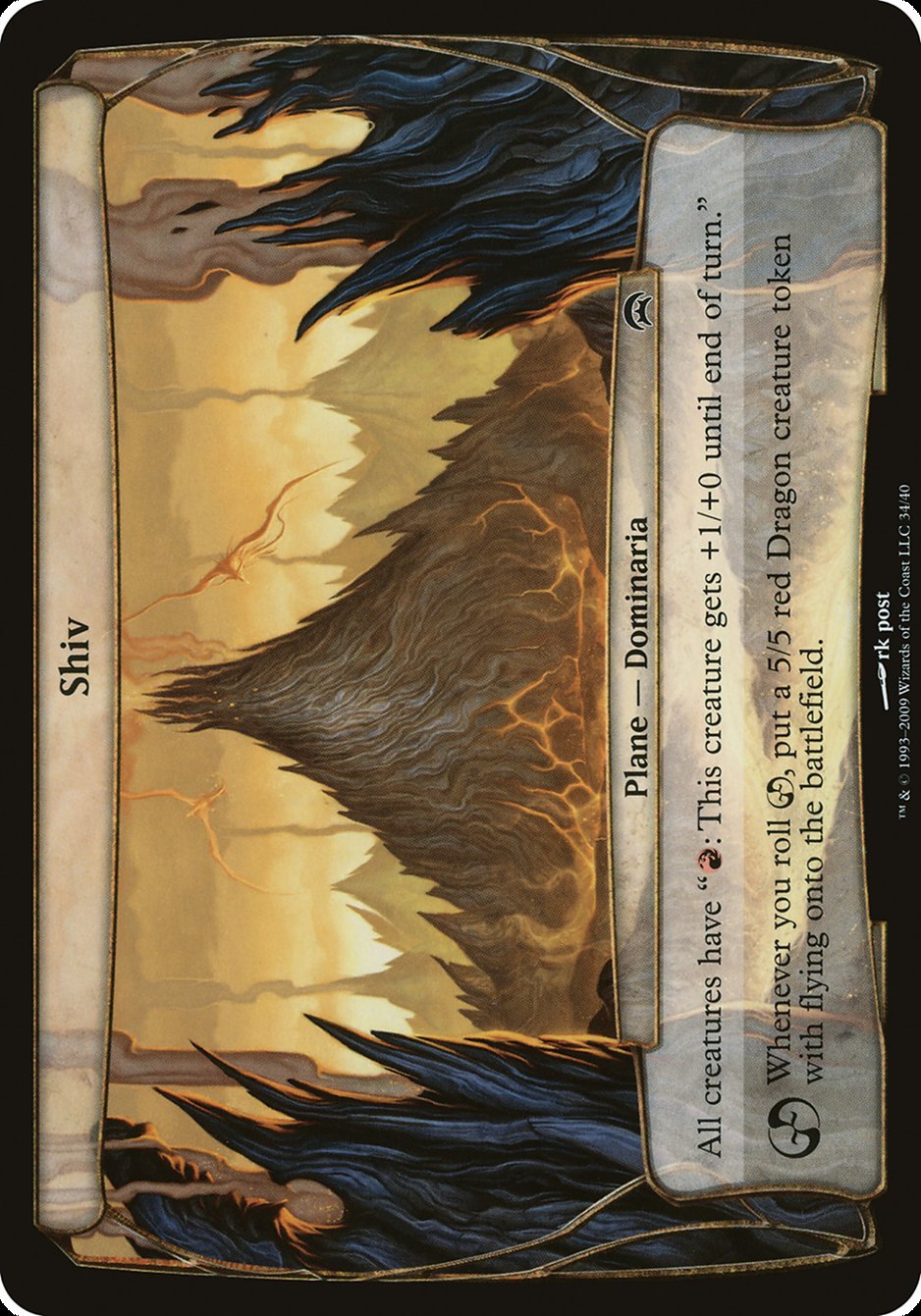Shiv Carta MTG
| Expansões | Lançada em 2 expansõesVer todas |
| Raridade | Comum |
| Tipo | Plane — Dominaria |
Texto da carta
All creatures have ": This creature gets +1/+0 until end of turn." Whenever you roll chaos, put a 5/5 red Dragon creature token with flying onto the battlefield.
Texto da carta Shiv
All creatures have ": This creature gets +1/+0 until end of turn." Whenever you roll chaos, put a 5/5 red Dragon creature token with flying onto the battlefield.
Onde comprar
Se você deseja comprar um cartão Shiv MTG de um conjunto específico como Planechase Planes and Planechase Anthology Planes, há diversas opções confiáveis a serem consideradas. Uma das principais fontes é a loja de jogos local, onde muitas vezes você pode encontrar boosters, cartas individuais e decks pré-construídos de conjuntos atuais e de alguns conjuntos anteriores. Eles geralmente oferecem o benefício adicional de uma comunidade onde você pode negociar com outros jogadores.
Para um inventário mais amplo, especialmente de conjuntos mais antigos, mercados on-line como TCGPlayer, Card Kingdom e Card Market oferecem seleções extensas e permitem que você pesquise cartas de conjuntos específicos. Grandes plataformas de comércio eletrônico, como eBay e Amazon, também têm listagens de vários vendedores, o que pode ser um bom lugar para procurar produtos lacrados e achados raros.
Além disso, o site oficial do Magic geralmente tem um localizador de lojas e listas de varejistas para encontrar a Wizards of the Produtos licenciados pela Costa. Lembre-se de verificar a autenticidade e a condição dos cartões ao comprar, especialmente de vendedores individuais em mercados maiores.
Abaixo está uma lista de alguns sites de lojas onde você pode comprar os Shiv e outras cartas MTG:
 COMPRAR
COMPRAR BurnMana é parceiro oficial da TCGPlayer
- eBay
- Card Kingdom
- Card Market
- Star City Games
- CoolStuffInc
- MTG Mint Card
- Hareruya
- Troll and Toad
- ABU Games
- Card Hoarder Magic Online
- MTGO Traders Magic Online
Veja produtos de MTG
Expansões
A carta Shiv Magic the Gathering foi lançada em 2 expansões diferentes entre 2009-09-04 e 2018-12-25. Ilustrado por rk post.
| # | Lançamento | Nome | Código | Símbolo | Número | Moldura | Layout | Borda | Artista |
|---|---|---|---|---|---|---|---|---|---|
| 1 | 2009-09-04 | Planechase Planes | OHOP | 34 | 2003 | Planar | Preta | rk post | |
| 2 | 2018-12-25 | Planechase Anthology Planes | OPCA | 70 | 2015 | Planar | Preta | rk post |
Regras e informações
O guia de referência para regras de cartas de Magic: The Gathering Shiv fornece decisões oficiais, quaisquer erratas emitidas, bem como um registro de todas as modificações funcionais que ocorreram.
| Data | Texto |
|---|---|
| 2009-10-01 | A face-up plane card that’s turned face down becomes a new object with no relation to its previous existence. In particular, it loses all counters it may have had. |
| 2009-10-01 | A plane card is treated as if its text box included “When you roll {PW}, put this card on the bottom of its owner’s planar deck face down, then move the top card of your planar deck off that planar deck and turn it face up.” This is called the “planeswalking ability.” |
| 2009-10-01 | If an ability of a plane refers to “you,” it’s referring to whoever the plane’s controller is at the time, not to the player that started the game with that plane card in their deck. Many abilities of plane cards affect all players, while many others affect only the planar controller, so read each ability carefully. |
| 2009-10-01 | The controller of a face-up plane card is the player designated as the “planar controller.” Normally, the planar controller is whoever the active player is. However, if the current planar controller would leave the game, instead the next player in turn order that wouldn’t leave the game becomes the planar controller, then the old planar controller leaves the game. The new planar controller retains that designation until they leave the game or a different player becomes the active player, whichever comes first. |

